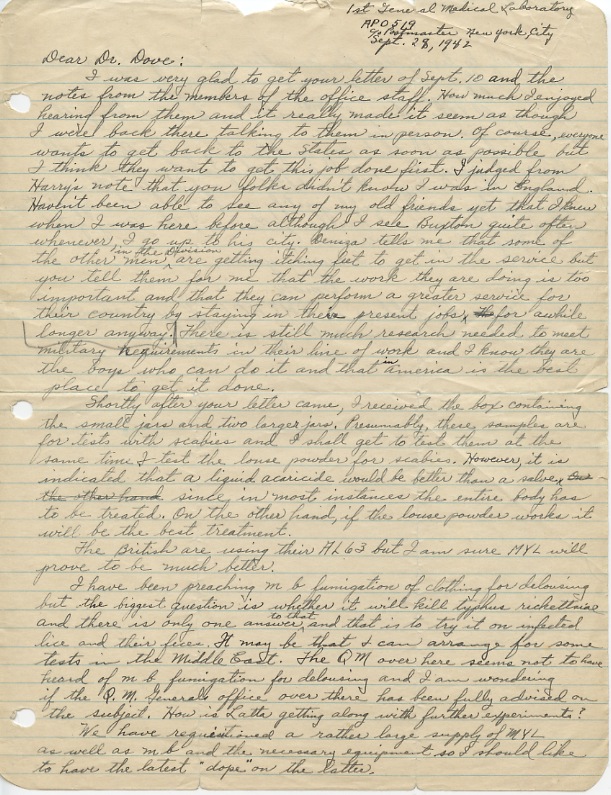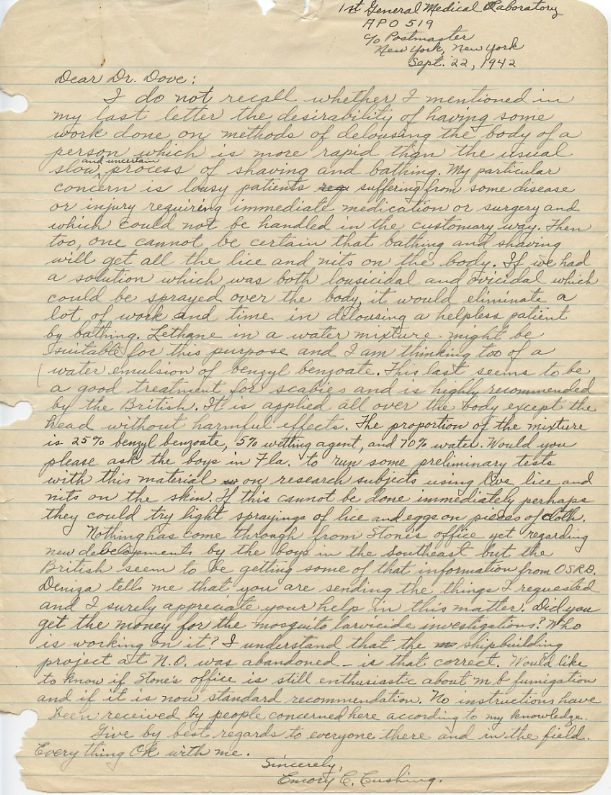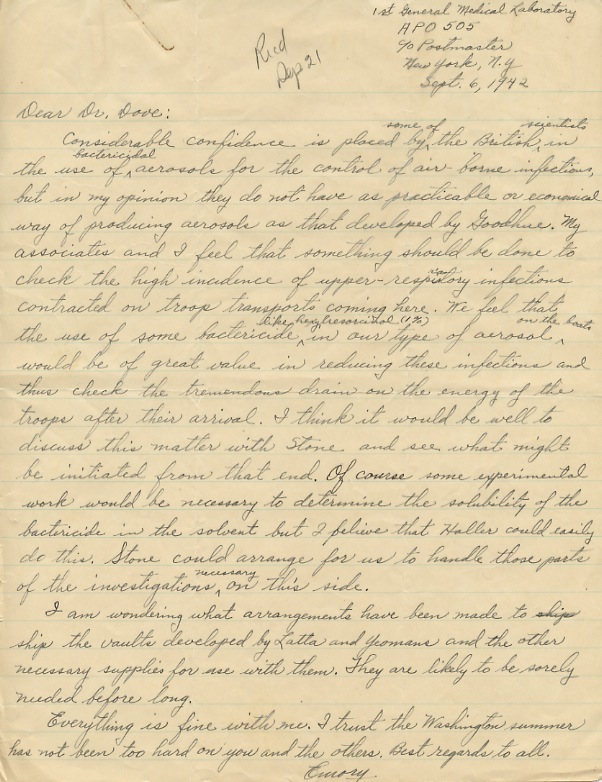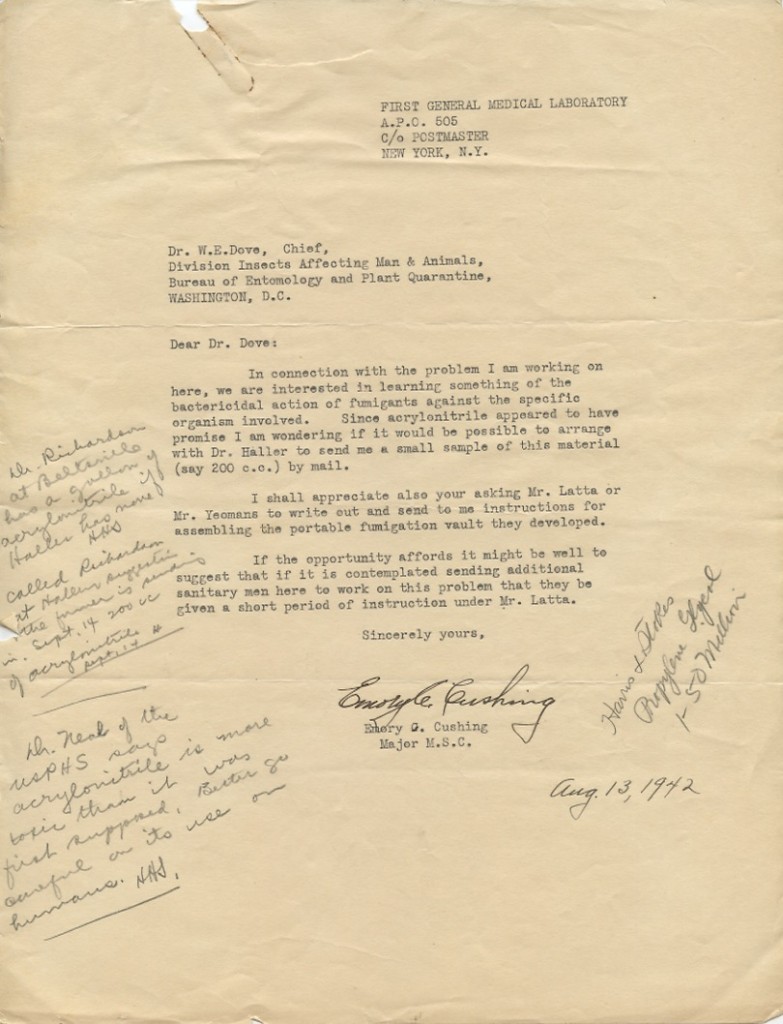1st General Medical Laboratory
APO 519
c/o Postmaster New York City
Sept. 28, 1942
Dear Dr. Dove:
I was very glad to get your letter of Sept. 10 and the notes from the members of the office staff. How much I enjoyed hearing from them and it really made it seem as though I were back there talking to them in person. Of course, everyone wants to get back to the States as soon as possible but I think they want to get this job done first. I judged from Harry’s note that you folks didn’t know I was in England. Haven’t been able to see any of my old friends yet that I knew when I was here before although I see Buxton quite often whenever I go up to his city. Deniza tells me that some of the other men in the Division are getting itching feet to get in the service but you tell them for me that the work they are doing is too important and that they can perform a greater service for their country by staying in their present jobs for awhile longer anyway. There is still much research needed to meet military requirements in their line of work and I know they are the boys who can do it and that in America is the best place to get it done.
Shortly after your letter came, I received the box containing the small jars and two larger jars. Presumably, these samples are for tests with scabies and I shall get to test them at the same time I test the louse powder for scabies. However, it is indiciated that a liquid acaricide would be better than a salve, since in most instances the entire body has to be treated. On the other hand, if the louse powder works it will be the best treatment.
The British are using their AL63 but I am sure MYL will prove to be much better.
I have been preaching M.B. fumigation of clothing for delousing but the biggest question is whether it will kill typhus rickettsiae and there is only one answer to that and that is to try it on infected lice and their feces. It may be that I can arrange for some tests in the Middle East. The QM over here seems not to have heard of M.B. fumigation for delousing and I am wondering if the Q.M. General’s office over there has been fully advised on the subject. How is Latta getting along with further experiments?
We have requisitioned a rather large supply of MYL as well as M.B. and the necessary equipment as I should like to have the latest “dope” on the latter.
Was glad to learn that the Committee had accepted 612. It seems to be badly needed everywhere from the reports I hear.
Could you give some information yet on how well the ovicide in MYL works and how long the powder gives protection.
I am glad that Roy and Knipling got their well-deserved promotions, and I hope Miss Lynch gets hers soon too. Perhaps the additional money for the larvicide work will justify making another application. How is Bruce and has he gotten in the Army yet? Did Major King go overseas?
Sincerely yours,
Emory.
P.S. My cable address is AMIHOP if you should care to reach me in a hurry sometime.
ECC.




